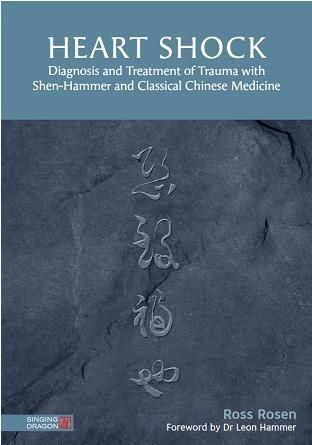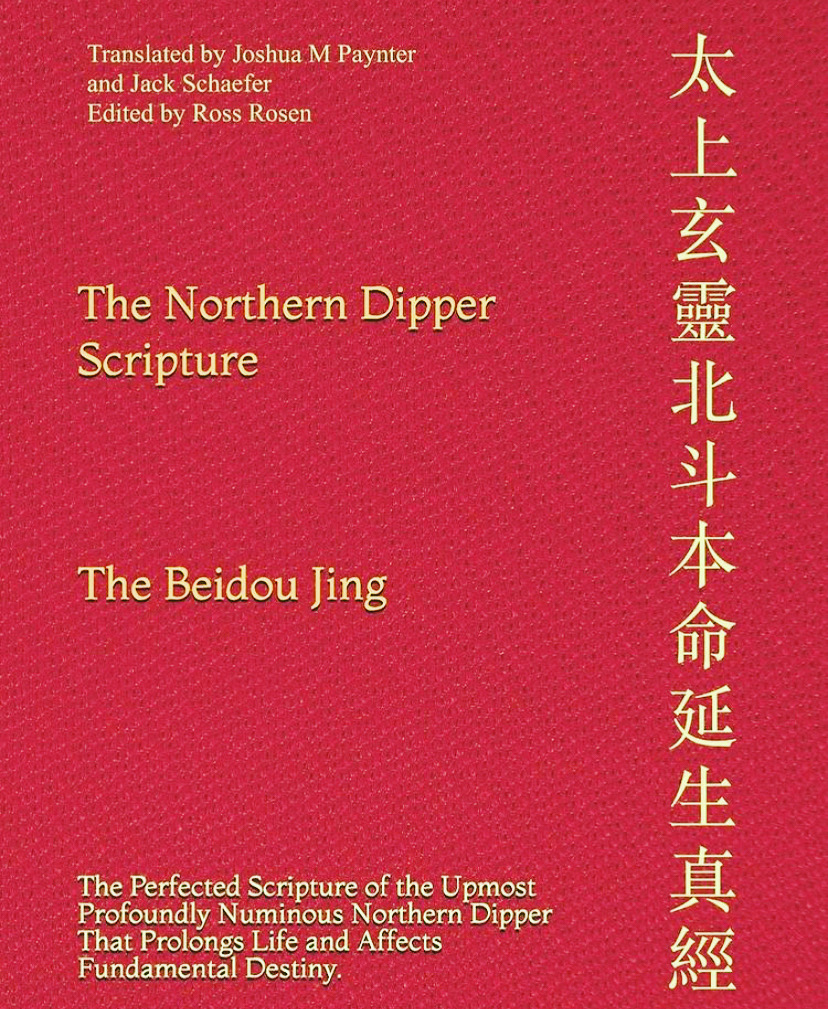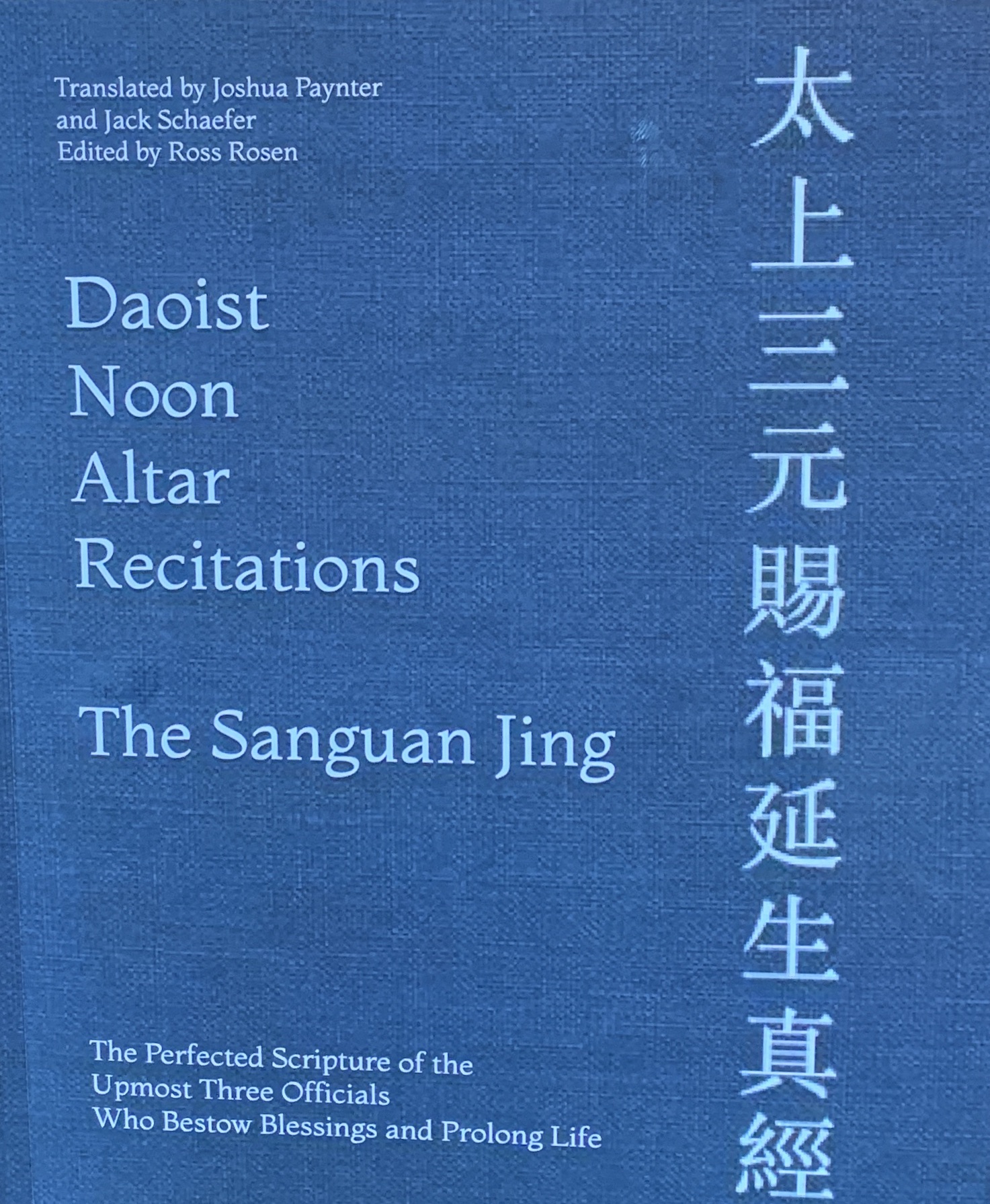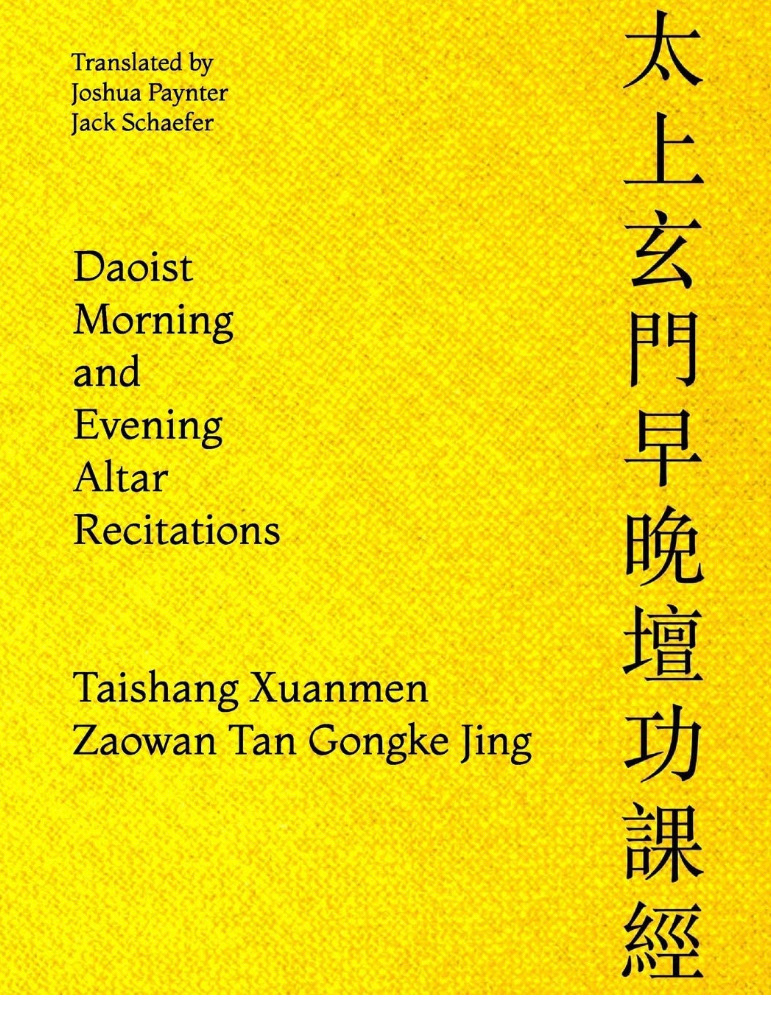 Ross’ book “Heart Shock: Diagnosis and Treatment of Trauma with Shen-Hammer and Classical Chinese Medicine” published by Singing Dragon publications will be available in June 2018. “Heart Shock” will present in detail the myriad components of trauma, establish primary, secondary and tertiary treatment strategies and merge the Shen-Hammer and Classical understanding of this important topic. Diagnosis via a comprehensive presentation of each of the channel systems (sinew, luo, primary, divergent, eight extras) will be provided, as will additional concepts such as gu and gui, Dr. Shen’s nervous system, pulse instruction for all the channel systems, etc. all with extensive treatment options with acupuncture, herbal medicine and essential oil therapies.
Ross’ book “Heart Shock: Diagnosis and Treatment of Trauma with Shen-Hammer and Classical Chinese Medicine” published by Singing Dragon publications will be available in June 2018. “Heart Shock” will present in detail the myriad components of trauma, establish primary, secondary and tertiary treatment strategies and merge the Shen-Hammer and Classical understanding of this important topic. Diagnosis via a comprehensive presentation of each of the channel systems (sinew, luo, primary, divergent, eight extras) will be provided, as will additional concepts such as gu and gui, Dr. Shen’s nervous system, pulse instruction for all the channel systems, etc. all with extensive treatment options with acupuncture, herbal medicine and essential oil therapies.
Heart Shock Book Order via Ross’s Website
Heart Shock Book Order via Amazon
Testimonials for Heart Shock:
For some time Ross Rosen has been one of our most important, successful, and innovative pulse instructors. He also has established one of the most successful practices of Chinese medicine of which I am aware so that all that follows in this volume is grounded not only in a profound study of the classics and current scholarship but also in hands-on practice and a background in the martial arts and traditional Chinese esoteric ritual This volume will establish Ross Rosen as a significant Chinese scholar-practitioner of our time and beyond. Heart Shock is one of the most thorough dissertations I have read on any subject in my long career in science. I feel qualified to speak to this subject in particular having been exposed for years to the clinical and conceptual observations on Heart Shock by Dr. John H.F. Shen with whom I apprenticed for many years and recorded them and my own in several published articles. Ross Rosen has placed this chosen subject, Heart Shock, within that context in his first part of this volume. He has then further and brilliantly expounded Heart Shock, synthesizing it precisely within the context of the human organism’s sophisticated defensive system from the Qi to the Blood and Yuan levels as conceived progressively from the Nei Jing to the present as taught by Jeffrey Yuen.
— Dr Leon Hammer, Author of Chinese Pulse Diagnosis: A Contemporary Approach, Dragon Rises, Red Bird Flies, Handbook of Contemporary Chinese Pulse Diagnosis, The Patient-Practitioner Relationship, and Concepts
Heart Shock is a comprehensive exploration of the intricacies pertaining to “trauma” and its impact on our hearts. Ross Rosen has taken on the arduous task of providing a definitive and rich exposition for the clinician and individuals interested in unraveling more about themselves through the lens of the Shen-Hammer lineage and Classical Chinese Medicine, in addition to his own insights and revelations. The text is filled with time-tested strategies and resourceful modalities to one of life’s most perplexing questions — how to treat our “hearts.”
–Jeffrey C. Yuen, Director of Classical Studies, Daoist Traditions College of Chinese Medical Arts
The heart/kidney axis is a physiological metaphor for integrity in the core of the self as the confluence of heaven and earth. The inner tradition of medicine recognizes the primacy of this relationship as contextualizing all treatment. In Heart Shock, Ross Rosen has produced a beautiful synthesis of the Shen/Hammer tradition and Jeffrey Yuen lineage as they address this perspective. This will be an indispensible reference text for students in both traditions. For others it will be a beacon toward a much greater depth of practice. Ross’ accomplishment provides inspiration for those of us who strive to be Scholar/Physicians. Heart Shock offers further evidence that the evolution of medicine is in good hands.
–Lonny Jarrett, M.Ac., Author of “Nourishing Destiny” and “The Clinical Practice of Chinese Medicine.”
Based on the fundamental concept of resonance (gan ying), many Asian medical traditions can be seen to be organized around the idea that the Heart is the “Emperor” of each individual’s life. Heart Shock explains how this perspective can enlighten our understanding of almost all health challenges, perhaps even more so in contemporary times than in some less stressful eras when social roles were less fluid. Even within Chinese medicine there are differences between lineages of various teachers. Ross Rosen has done an admirable job of synthesizing the Shen/Hammer and Jeffrey Yuen styles ofdiagnosis and treatment. Heart Shock is both an introduction to, and a fully fleshed out primer on these approaches. Having been a synthesizer of disparate Asian medical systems myself, I must congratulate Ross Rosen on his unique accomplishment, bringing to light information that has never before been integrated into a coherent resource for students and practitioners alike.
–Peter Eckman M.D., Ph.D., M.Ac.(UK), Author of In the Footsteps of the Yellow Emperor, The Compleat Acupuncturist, and Grasping the Donkey’s Tail
This is a very valuable book. ‘Heart Shock or Trauma’ was first coined by Dr. John HF. Shen who belongs to our Menghe-Ding Lineage. Dr. Leon Hammer (whom I have been fortunate to know and read his publications) was Dr. Shen’s apprentice, and with the advantage of being both a psychiatrist and a Chinese doctor has raised the scope of knowledge to new heights. Ross Rosen’s manuscript builds on this information. After reading it I can’t help admiring Ross Rosen — without his diligence and wisdom this book could not have been completed. The book shows a full range of levels beyond the ordinary. It offers the reader both an ability to understand the concepts surrounding ‘Heart Shock’ and also provides detailed explanations of the many healing strategies and treatments. It is worth reading for practitioners or students of Oriental Medicine. I will be recommending this book to TCM doctors in China.
—Dr. Ding Yie, Chief Physician & Professor, Long Hua Hospital affiliated to Shanghai University of TCM
Buy Scripture Translation Here
Parting Clouds Daoist Press is thrilled to present its translation of The Beidou Jing, or The Perfected Scripture of the Upmost Profoundly Numinous Northern Dipper That Prolongs Life and Affects Fundamental Destiny. As its title suggests, this Scripture allows a glimpse into the complexities of Daoist metaphysics, including time and space, as well as the nature of our existence and its causes. Through this Scripture we are presented with a clear view of the exciting dynamics of Daoist ritual text. It proposes some of the finest nuances of Daoist doctrine, and answers some fundamental questions pertaining to cyclic rebirth, ethical development, and the soteriological efficacy of ritually performed Scripture. It tackles the often confusing issues surrounding the implications of one’s astrology, and how that corresponds to karmically defined destiny and the effects of previous causes upon our lived experience.The Beidou Jing expresses our relationship to, and reliance upon, the seven visible, and two invisible, stars of the Northern Dipper. Through this, we see an illustration of this Daoist astro-deity, how these celestial bodies are deified, and how celestial position and movement play into the abilities and features of the deified forms. It further provides us with a ritual reading and practice to be performed throughout the calendar year, on the allotted days, by which the practitioner can effect change in the events that lie just beyond the horizon. As it states in the Scripture, “My destiny is none other than me,” meaning that a practitioner is not bound by, and can change, one’s life destiny. By performing these recitations and heeding the doctrines herein, a practitioner has the tools to alter the outcomes that have been set in motion in this life, as well as from previous incarnations. Lastly, the importance of this Scripture memorializing an interaction, many years ago in Chengdu, Sichuan, between Taishang Laojun and the Celestial Master, should not be overlooked. At its heart, this bequeathment is the testimony of a means to salvation, a means to end suffering, and a means to improve our world, even when all appears lost.The current Scripture, along with the Morning, Evening, and Noon Altar Recitations, form the main corpus of liturgical texts common to most Quanzhen Longmen Daoist temples. They are known collectively as the Four Immortal Scriptures, and contain within their covers the predominance of the essential doctrines. This translation completes this collection, and it is our sincere hope that they serve you well, that they are a comfort to you, and that they aid your practice.
Buy Scripture Translation Here
This is a translation of The Profound Scripture of the Upmost Three Officials Who Bestow Blessings, Pardon Sins, Dispel Calamities, Avert Disasters, Prolong Life, and Secure Destiny, also known as The Scripture of the Three Officials, or the Sanguan Jing 三官經. This is the third of what will be a four-part series of translations of Daoist scriptures by Parting Clouds, which includes the previously published Morning and Evening Recitations, and the Beidou Jing 北斗經 (to be released at the end of this summer). These four textual bodies constitute the predominant share of the daily and monthly liturgy of the typical Quanzhen temple, the current translation of which is recited daily at noon (11-1 hour or 午時). The content of this Scripture concerns our activities, and speaks directly to the ramifications and repercussions of said actions. As such, from a Daoist doctrinal perspective, it outlines the basic nature of cause and effect. Sometimes called the Sanguan Ganying Miaojing 三官感應妙經, or The Three Officials’ Profound Scripture of Response to Causes, this text addresses seemingly similar issues covered in the Taishang Ganying Pian 太上感應篇, or Taishang’s Treatise on Response to Causes. However, the Taishang Ganying Pian was written primarily for a lay audience, the text being generally offered for free somewhere in the temple, often in small pocket-sized copies, for the visitor to take home. In the case of the Sanguan Jing, the content is geared towards, and is more applicable to, the initiated practitioner. The structure of the Sanguan Jing mirrors other altar recitations in which we find particular language, purification prayers at the beginning (e.g., the Bada Shenzhou), etc. Additionally, it should be noted that this is a Jing, or Scripture, and not a Pian, or Treatise. This, alone, demonstrates an important feature meant to separate this Scripture from its lay counterpart. So, despite some conceptual doctrinal similarities of cause and effect, the Sanguan Jing needs to be understood as a practitioner’s text, an attentive daily reading of which will reveal a surprising amount of doctrinal subtlety and bring the reader closer to alignment with the tradition.Within this Scripture, one can identify a few central themes: the bestowal of blessings, the absolution of sin, the dispelling of calamities, the prolonging and protection of life, and other such concerns. All of these themes reveal the functions of, and are predicated upon, the actions of the Three Officials of Heaven, Water, and Earth, and it is to these Three Officials to whom the noon recitations are directed. These Three Officials, their functions and activities, harken back to the very earliest roots of organized Daoism. The Wudoumi Dao 五斗米道 (Five Pecks of Rice), or Tianshi Dao 天師道 (Celestial Masters) movement’s central practice of written confessions relied heavily upon the relationship with these Three Officials as the recipients, and ultimate arbiters, of said confessions. The Sanguan Jing exemplifies the continued and on-going importance of understanding our actions and their effects, an integral component for the full understanding of Longmen 龍門 Daoism which elevates particular doctrines and practices central to the lineage, especially the following of precepts and the host of other ethical features of the tradition, in service of achieving realization.
Buy Scripture Translation Here
This work is the first complete translation of the Morning and Evening Altar Recitations, 玄門早晚壇功課經 (Xuanmen zaowan tan gongke jing) also known as “The Gongke”. The Gongke is the collection of liturgical scriptures recited at the altar at every Quanzhen Daoist Temple. These recitations occur in the early morning and in the evening, and can be as simple as a sole chanter or as complicated as the entire body of resident monks and nuns. There can be a simple accompaniment of a wooden fish bell, or the ornate accompaniment of the Daoist orchestra. Whether simple or complex, at the heart of these performances is the text itself. The corpus of texts is a fascinating journey through Daoist doctrine and practice. Prayers of purification, hagiographies of special deities, prayers of commitment, cosmology, meditation, theory, and much more all converge in this collection. It can be said that this is a pocket sized or mini Daoist Canon. Josh and Jack set about translating this as a response to a deep need to connect to the tradition and the most common practices as experienced in daily life at the temples. As Daoism continues to take root in the West, it is becoming more mature in its presence. The relationship to lineages in China is becoming the new norm. As such, there is a need to align with those practices that describe traditional lineage Daoism. The Gongke, and its recitation, is one such defining text. By having access to the translation and the original Chinese and pinyin pronunciation (all provided in this book), the English speaking person can now engage and understand this practice and the textual depth and meaning within.



